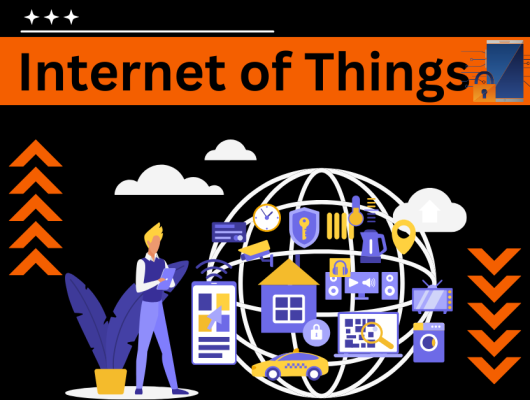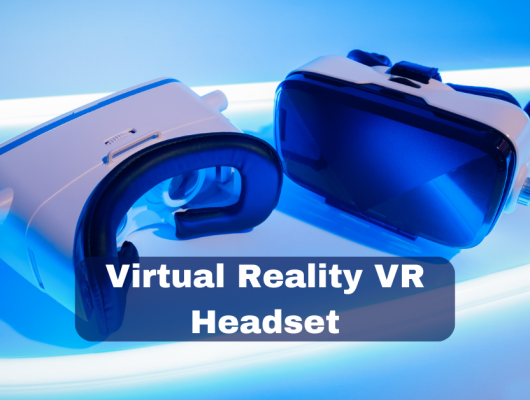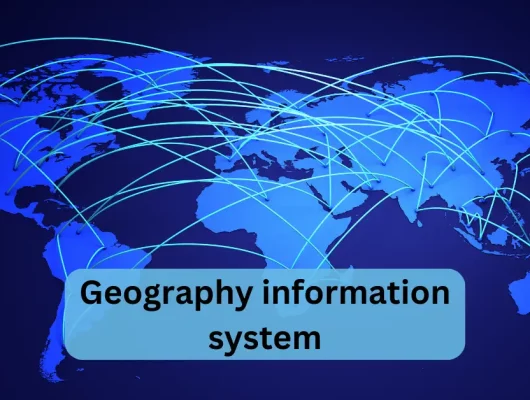Introduction
Technology has become a vital component of our everyday life in our fast-paced society, influencing every facet of human existence. The advantages of technology in communication, entertainment, education, and healthcare are indisputable. This article explores the different ways that technology has transformed our lives, improving their efficiency and convenience. Healthcare technology refers to the use of advanced tools and systems to enhance healthcare delivery, diagnosis, treatment, and patient care. It includes medical devices, electronic health records, telemedicine, and more. The benefits of technology in our lives are numerous, from increased access to information and education to improved communication,
Technology Enhances Communication
Social Media and Connectivity
The way technology has changed communication is one of its most obvious advantages. People may connect with friends and family worldwide using social media sites like Facebook, Twitter, and Instagram, overcoming distances and fostering stronger bonds. These platforms have transformed not just the way we communicate with one other but also the way we live together. Instantaneously posting updates, pictures, and videos enables loved ones, no matter how far away they are, to keep informed about life’s happenings. Families and friends have become closer despite distances that may have appeared insurmountable in the past thanks to this degree of connectivity.
Instant Messaging and Video Calls
Long-distance communication has become more rapid and intimate thanks to video calling apps like Zoom and instant messaging platforms like WhatsApp. When in-person meetings are not feasible due to a crisis, these resources have shown to be quite helpful. Face-to-face communication has been redefined, especially with video calls. They offer a near simulation of interactions in real life. You can work together with coworkers or students, share memorable moments, and watch the reactions on the faces of your loved ones. When we couldn’t be there in person, video chats have helped to close the distance for interactions that are personal, professional, or educational.
Access to Information
Online Learning and Research
Education has become more accessible thanks to technology, as a multitude of knowledge is now available online. People can learn and conduct research from the comfort of their homes with the help of digital resources and online courses. Online learning environments have increased access to education, allowing people to further their education or learn new skills. Due to its flexibility, education is now more accessible to remote learners and working professionals, dismantling previously existing barriers to learning.
E-books and Digital Libraries
The days of hauling around bulky books are long gone thanks to technology, which has created digital libraries and e-books. Reading is now more convenient than ever thanks to the abundance of books available in digital formats on e-readers and tablets. You can carry a whole library around in your pocket with e-books. They are frequently affordable, lightweight, and searchable. On the other side, you can now have access to a huge knowledge base at your fingertips thanks to digital libraries. The way we access and use knowledge has been completely transformed by these digital tools, regardless of whether we are professional researchers, students, or voracious readers.
Improvements in Healthcare
Telemedicine
Telemedicine has revolutionized healthcare thanks to technology. In order to ensure they receive the necessary medical attention while saving time and resources, patients can consult with healthcare professionals remotely. Healthcare is now more readily available, especially for people who live in remote or underserved areas thanks to telemedicine. Additionally, it has been an essential tool in times of global health emergencies, allowing medical professionals to diagnose and treat patients virtually. From the comfort of their homes, patients can discuss their symptoms, get advice from medical professionals, and even fill prescriptions.
Medical Devices and Diagnostics
Healthcare results have been enhanced by medical devices, such as wearable technology and diagnostic instruments. These gadgets support early disease detection and assist people in keeping an eye on their health. Wearable technology, such as smartwatches and fitness trackers, has given people the ability to take charge of their health. They offer up-to-date information on physical activity, sleep patterns, and vital signs. One can use this information to make well-informed decisions regarding their health and way of life. Conversely, diagnostic instruments have advanced in sophistication, making it possible to identify a wide range of medical conditions early on. Technology has given people more control over their healthcare, from at-home pregnancy tests to blood glucose monitors for diabetics.
Enhanced Productivity
Automation and Efficiency
Productivity has increased dramatically in a number of industries thanks to technology. Automation increases efficiency and lowers costs by streamlining operations in manufacturing, agriculture, and logistics. Technology for automation has completely changed the way businesses run. Repetitive tasks are completed quickly and precisely by robots and computer programs, which lowers the possibility of mistakes and boosts overall productivity. Robots can assemble goods in the manufacturing sector, and automated equipment can plant and harvest crops in the agricultural sector. These developments not only boost productivity but also free up human capital for more strategic and creative work.
Remote Work Opportunities
Remote work opportunities have arisen as a result of technological advancements. With the ability to work from home, people can improve their work-life balance by doing away with the need for daily commutes. Many people and businesses can now work remotely thanks to the internet and cloud computing. This tendency has become especially noticeable after major world events that compelled people to change the way they work. In addition to providing flexibility, working remotely lessens the environmental impact of commuting and improves work-life balance for employees. Expanded access to talent, lower overhead, and the capacity to continue operations in the face of unanticipated disruptions are advantages that businesses also enjoy.
Entertainment and Leisure
Streaming Services
The entertainment industry has witnessed a digital revolution with the advent of streaming services like Netflix and Spotify. These platforms offer a vast library of content at our fingertips. Streaming services have transformed how we consume entertainment. Instead of purchasing physical copies of movies or music, individuals can access a vast catalog of content through monthly subscriptions. This convenience allows viewers and listeners to explore a wide range of options at a fraction of the cost. Additionally, the ability to stream content on-demand has made it easier for creators to reach a global audience.
Gaming and Virtual Reality
With the advancement of technology, gaming has changed to provide immersive virtual reality (VR) experiences. Players can enter different realities and discover countless options. The advent of virtual reality technology has revolutionized the gaming industry. It immerses users in virtual worlds and gives them access to previously unimaginable ways to interact with games. VR gaming has pushed the limits of what’s possible in the gaming industry, whether you’re fighting aliens in space, exploring the depths of the ocean, or just enjoying a more realistic sports simulation.
Economic Growth and Opportunities
E-commerce and Online Markets
Businesses can now reach a worldwide audience thanks to e-commerce sites like Amazon and eBay. Customers gain from a large selection of goods at affordable costs. E-commerce has changed how consumers and businesses interact. Through online marketplaces, businesses can connect with consumers outside of their local markets, broadening their consumer base and stimulating the economy. In addition to the ease of browsing and buying from the comfort of their homes, consumers benefit from a large selection and affordable prices.
Start-ups and Innovation
Innovation is encouraged by technology, which allows startups to upend established markets. Emerging concepts and companies have the potential to prosper, propelling economic expansion. The technology industry has developed into a hub for innovation, with startups being essential to the expansion of the economy. These small, nimble businesses introduce disruptive technologies and services, upending long-standing business models. Angel and venture capital funding are readily available, which supports this entrepreneurial ecosystem even more. Thus, innovation is not confined to the titans of industry; rather, it flourishes at the local level, propelling growth in the economy and the creation of jobs.
Environmental Benefits
Energy Efficiency
The advancement of technology has been essential to increasing energy efficiency. These innovations, which range from smart thermostats to LED lighting, lower energy consumption and encourage sustainability. Numerous technologies that reduce energy waste have been developed as a result of the push for energy efficiency. For example, LED lighting uses a great deal less energy than conventional incandescent bulbs while offering comparable or superior illumination. Smart thermostats optimize heating and cooling while lowering energy costs and their environmental effect by using algorithms and data analysis.
Conservation Efforts
Digital technologies support environmental monitoring and preservation. Wildlife conservation and habitat protection are made possible by GPS tracking, drones, and data analysis. Researchers and conservationists use technology to protect endangered species and the environment. They can track animal movements with GPS tracking, which makes conservation efforts more successful. Drones are employed in remote area monitoring and aerial surveying. The development of conservation strategies is made possible by data analysis, which offers insightful information about ecological trends. To preserve the biodiversity of our planet, technology and conservation must work together.
Challenges of Technology
While technology brings numerous benefits, it also poses challenges:
Privacy Concerns
Privacy concerns are raised by the collection and use of personal data. Finding the right balance between privacy and convenience is a constant struggle. The use and gathering of personal data has become a divisive topic due to the widespread use of digital devices and internet services. Users frequently exchange their data for convenience, but privacy concerns have been raised by this practice. Finding a balance between the advantages of technology and protecting private data is a constant struggle.
Digital Divide
A digital divide results from unequal access to technology for all people. To guarantee that everyone can profit from technological advancements, this gap must be closed. In the age of technology, the digital divide continues to be a problem. There are differences in who has access to resources and opportunities, and these differences can be caused by a number of things, such as access to education, geographic location, and economic status. In order to guarantee that everyone can benefit from technology, regardless of their circumstances, it is imperative to close the digital divide.
Conclusion
In summary, benefits of technology has enormous and transformative benefits for our lives. Technology has completely changed the way we live, from boosting productivity and providing limitless entertainment options to bettering communication and healthcare. To guarantee that these advantages are available to everyone, it is crucial to address issues like privacy concerns and the digital gap. As technology develops, society must learn to navigate this constantly shifting terrain in an inclusive and responsible manner.
FAQs
1. How has technology improved healthcare?
Through wearable technology, telemedicine, and diagnostic tools that improve patient care and accessibility to medical services, technology has improved healthcare. Patients can consult with medical professionals remotely through telemedicine, and wearable technology enables people to keep an eye on their health.
2. What is the digital divide?
The difference in access to technology between those who do and do not is known as the “digital divide.” Disparities in opportunities, work, and education may result from it. Creating a more inclusive society requires closing this gap.
3. How has technology impacted the entertainment industry?
Through the introduction of virtual reality, streaming services, and immersive gaming, technology has completely changed the entertainment sector. The way we engage with and consume entertainment content has changed as a result of these innovations.
4. What are some environmental benefits of technology?
Energy-efficient innovations like LED lighting and smart thermostats have been made possible by technology. Additionally, it supports conservation efforts by providing tools like drones and GPS tracking, which save ecosystems and wildlife.
5. What are the key challenges posed by technology?
Two major issues that technology presents are the digital divide and privacy concerns. Ensuring fair access to technology and striking a balance between privacy and convenience are persistent problems that need to be addressed.







